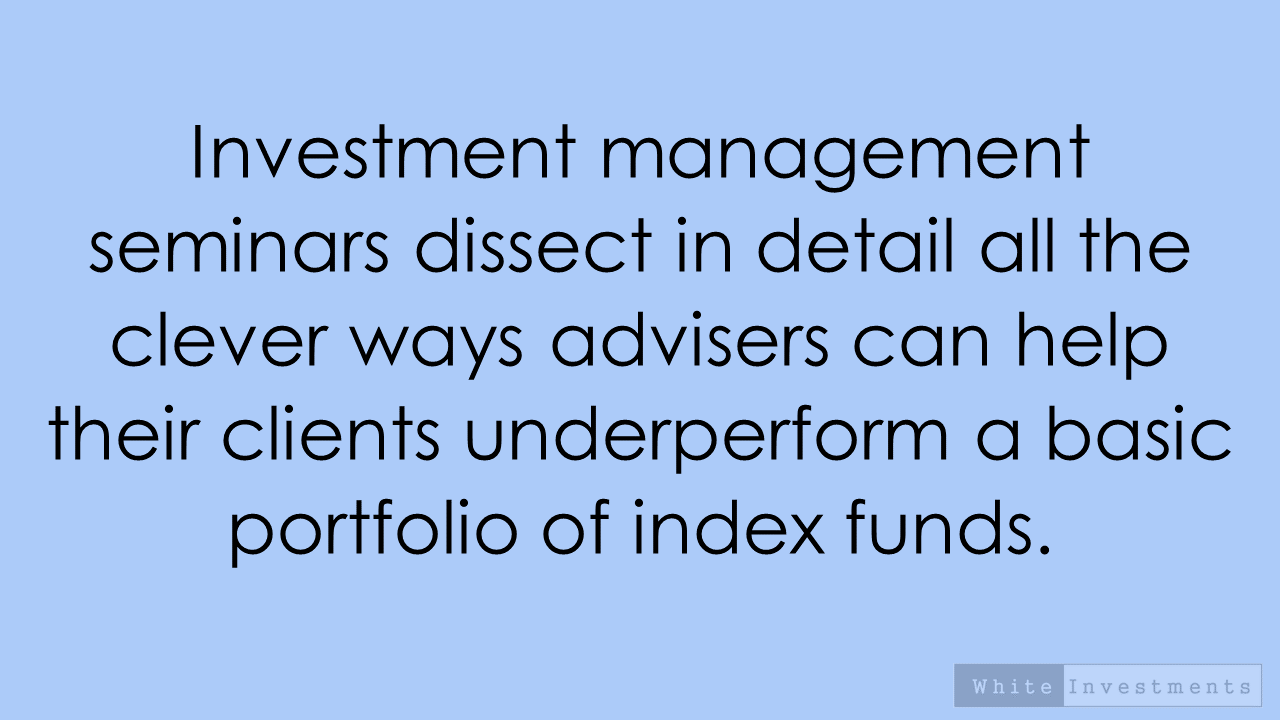There is actually no such thing as passive investing as an individual.
Sure you can own a fund or ETF that tracks an index, like the S&P 500, for example.
And it is true the fund is a passive fund.
But when you choose to use that fund in your investment solution, you are making an active decision.
Why bring this up?
I was having a conversation with a prospective client the other day and they were somewhat fixated on AI and what has become known as the Magnificent 7 stocks in particular.
If you are not sure what I am talking about here is a introduction to the Magnificent 7.
The following graphic illustrates why such a fixation is so common these days:

The blue line in the graphic above illustrates how these 7 companies stock performance have turned $100 into about $400 since the start of 2020.
The black line shows you what the other 493 stocks in the S&P 500 (most common broad measure of US listed stocks) delivered excluding these 7 stocks. Close to what looks like about $130 over the 4.5 years.
And finally the grey line shows you how the rest of the global developed stock markets (Think UK, Europe, Japan, Asia and Australasia) have done excluding the US market. Close to what looks like about $100 – so no returns.
Basically if you have not owned the Magnificent 7 stocks you have strugged to make progress since just before the pandemic.
Active decisions even with passive Funds:
If you were to seek exposure to this group of 7 companies you would have a variety of options to gain your US equity market exposure.
You could own a fund that only holds only the Magnificent 7 stocks – many fund management companies build products to capture the latest craze.
But let’s say you are sensible enough not to put all of your money into just 7 companies, after all in 2022 you would at some point have had less than half of what you had originally invested.
Then you could opt for the following:
– Nasdaq 100 Index: 100 companies skewed mostly to the US tech industry.
– S&P 500 Market Cap Index: This gives you exposure to the largest 500 US listed companies.
– MSCI World Index: This gives exposure to the worlds developed markets equities. Roughly 2/3 is in US stocks.
– S&P 500 Equal Weight Index: This index is designed to get rid of the heavy concentration risk. It weights each company in the S&P 500 equally – that is 0.2% in each company.
Which index do you choose?
You could have chosen any one of these ways to gain access to the US equity market. However, the exposure you would get to these big 7 tech stocks under each option would differ quite significantly, as the following table shows:

The table illustrates how even your inclusion of passive funds involves an active decision.
You can gain exposure to the first three of these indices right here in your South African investment accounts via various service providers including Satrix & Sygnia.
The performance in South African Rands (ZAR) for each of these options is shown in the graphic below.
Clearly the more you had in the Magnificent 7, the higher your returns over the last five years would have been.

I have shared the idea in a previous article that:
‘HINDSIGHT MAKES DIVERSIFICATION LOOK UNECCESSARY.’
Essentially looking back at past performance can make a decision seem like a no-brainer.
Making decisions looking forward is infinitely harder because the future is unknowable.
Another concept I have shared which is worth bearing in mind is that:
‘THE PAST PERFORMANCE OF AN ASSET REPRESENTS THE RETURNS YOU WILL NOT BE RECEIVING.’
What are the chances that this type of outperformance persists from these levels going forward?
Who knows?
My approach is:
– To focus more on price paid for an asset, as I believe the price you pay for an asset is the best predictor of likely future returns.
– To not get caught up chasing the hype. It usually does not end well. The cure for high prices is high prices after all.
– Link the investment strategy to the end goal or purpose. This will imply a future amount you need. A time horizon for when you need it. And an idea of what you can contribute to the goal. Those inputs will infer a required rate of return from your investments.
– To construct a well diversified portfolio which will have a good chance of delivering the required-return target, rather than try and pick the best performers year-in, year-out. It will aim to achieve this return in the most certain way possible – minimize the potential for negative outcomes.
It is hard to stick with these principles in the face of such rampant performance from such a small group of stocks over shorter time periods that’s for sure.
Reach out if you have any questions on the above or need help making progress in your financial life.
Follow my Facebook Page for insights, motivation and sometimes a bit of fun.
This article first appeared in my monthly newsletter. Sign up at the bottom of this page or check out past editions here.



